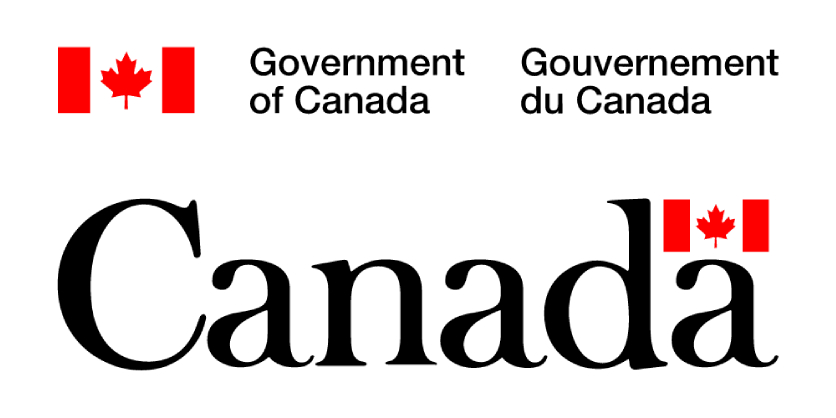Secretary of State Zerucelli Highlights New Government of Canada Measures to Protect, Build, and Transform Canada’s Workforce and Build Canada Strong
October 9, 2025

The world is rapidly changing, and the effect is profound. To meet the challenges of our time, we must build Canada strong. This starts with strength, ambition, and action, right here at home.
To these ends, the Honourable John Zerucelli, Secretary of State (Labour), visited the International Brotherhood of Electrical Workers (IBEW) to highlight new initiatives and investments for workers and businesses most affected by tariffs and trade disruptions.
- A reskilling package to train workers: The government will invest an additional $450 million over the next three years under the Labour Market Development Agreements. In partnership with provinces and territories, this investment will provide training programs for workers impacted by tariffs and global market shifts.
- Regional Tariff Response Initiative: The Government will expand support to SMEs to $1 billion over three years, with flexible terms, and increase new non-repayable contributions to eligible businesses impacted by tariffs across all affected sectors.
- Workforce Alliances and Sectoral Workforce Investment Fund: The Government will invest $382 million over five years and $56 million ongoing to tackle urgent labour market challenges, bring together government, employers, unions, and industry organizations to develop and implement tailored workforce development strategies, and drive growth.
- Employment Insurance temporary measures: The Government is extending measures until April 11, 2026, to ensure income stability for workers, particularly those who are most vulnerable to income shocks. This includes:
– Waiving the one-week EI waiting period to support an additional 700,000 EI claimants.
– Suspending the treatment of monies paid on separation which is expected to support close to an additional 175,000 claimants.
– Investing $1.6B over five years to temporarily give 20 extra weeks of income support, up to a maximum of 65 weeks to support nearly 190,000 long-tenured workers (LTWs). - Modernizing the Job Bank and launching a new online training platform: The Government is investing $50 million over five years towards a new digital jobs and training platform that will connect Canadians to jobs, tools, and training resources more quickly.
The full list of measures is available here.
These measures will give workers the tools they need to build a better future and help create the strongest workforce in the G7. As Canada’s new Government embarks on these missions, we will transform our economy – from one of reliance to resilience. By supporting our workers and industries, we are building Canada strong.
Quotes
“Canadian workers are the backbone of our economy, driving success in every corner of our country. By investing in skills, training, and resources, we are equipping workers with the tools they need to succeed today, and the confidence to lead tomorrow. Together we are building Canada strong.”
— The Honourable Patty Hajdu, Minister of Jobs and Families and Minister responsible for the Federal Economic Development Agency for Northern Ontario
“Canadian workers are facing a global economy that is changing rapidly but that holds significant opportunity for our workforce and for our country. The measures highlighted today are a good example of how we can put smart, strategic investments in place to help our workers advance their skills and build a Canada for the future.”
— The Honourable John Zerucelli, Secretary of State (Labour)
“The work that IBEW is able to achieve because of Union Training and Innovation Program is transformative. Today I witnessed Secretary of State Zerucelli engaging with our young apprentices and I couldn’t be more proud to be part of this initiative. We are readying the next generation for the jobs of tomorrow. Today’s tour was spectacular.”
— Nino DiGiandomenico, Assistant Business Manager IBEW Local 353
Quick facts
- A recent evaluation of the LMDAs showed that for each $1 invested in skills development, $1.54 in social benefits was generated for each person who received LMDA supports.
- The unemployment rate stands at 7.1% as of August 2025, indicating significant labour market challenges due to tariff impacts.
- In March 2025, the Government introduced a suite of temporary employment insurance (EI) measures in response to tariffs imposed on Canadian goods.
- The EI Work-Sharing Program flexibilities announced earlier this year to improve access and duration of agreements under the Program remain in place until March 2026. Strong employer uptake on the EI Work-Sharing Program with these flexibilities has helped avert over 12,600 layoffs, including in the hard-hit manufacturing sector.
- Job Bank is the leading source of jobs and labour market information in Canada, with over 100,000 jobs advertised per month, 300,000 registered employers, nearly 15 million jobs postings views per month, and 2 million job profile monthly views.
Backgrounder on Measures Introduced to Build a Strong and Confident Workforce
On September 5, 2025, the Government of Canada introduced several new measures and investments to protect, build and transform Canadian industries most impacted by tariffs and trade disruptions, including the following measures, focused on building a strong and confident workforce.
Reskilling package to train workers
Building on the $120 million investment announced for steel and softwood lumber workers over the summer, the Government will invest an additional $450 million over the next three years under the Labour Market Development Agreements with provinces and territories to provide training programs for workers impacted by tariffs and global market shifts.
This investment will be delivered through Canada’s comprehensive employment assistance network. In partnership with provinces and territories, the Government will work with businesses and workers to help fill labour force gaps and address skills shortages, including through proactive outreach to impacted workers.
Workers will get access to targeted training and financial assistance while in training to retain their job or fill in-demand jobs, enabling them to continue contributing to the Canadian economy.
These measures will benefit workers across Canada, including mid-career, long-tenured workers affected by U.S. tariffs and global market shifts, as well as underrepresented groups, such as persons with disabilities, women and Indigenous Peoples.
Workforce Alliances and Sectoral Workforce Investment Fund
The Government is also investing $382 million over five years and $56 million ongoing to strengthen collaboration between industry stakeholders and address pressing labour market challenges.
Up to five newly created Workforce Alliances will bring together government, employers, unions, and industry organizations to develop and implement tailored workforce development strategies.
Focusing on sectors under pressure and those with growth potential, the Alliances will aim to align training efforts with sector needs and Industrial priorities, facilitating effective responses to labour shortages.
To further support workforce readiness, federal investments made through the Sectoral Workforce Investment Fund will tackle urgent labour market challenges, drive growth and advance industrial strategies. The investment will respond to federal priorities as well as sectoral, regional and local workforce development needs, ensuring that workers receive training and support that match industry needs, promoting a strategic and targeted response to acute labour shortages.
Employment Insurance Temporary Measures
In March 2025, the Government introduced a suite of temporary employment insurance (EI) measures in response to tariffs imposed on Canadian goods. These measures have already supported tens of thousands of workers impacted by tariffs by providing them with timely and reliable access to EI benefits. Two temporary EI measures will now be extended from October 2025 until April 11, 2026 to ensure income stability for workers, particularly those who are most vulnerable to income shocks.
- Waiving the one-week EI waiting period (for claims established between March 30, 2025 and April 11, 2026)
- Suspending the treatment of monies paid on separation (for claims established between March 30, 2025 and April 11, 2026)
Additionally, the Government is investing $1.6B over five years to temporarily give 20 extra weeks of income support, up to a maximum of 65 weeks, to long-tenured workers who may need more time in a softer job market to find a job that is similar to the one they lost. It is expected to support about 190,000 long-tenured workers.
This measure will begin on October 12, 2025 and will apply to eligible claims established between June 15, 2025 and April 11, 2026.
Modernize Job Bank and launch a new online training platform
Job Bank is the Government of Canada’s official national employment service. The Government is investing $50 million over five years to modernize Job Bank’s online job tools, making it easier for Canadians to find jobs by integrating AI on the Job Bank platform. The Government will also launch a national online training platform to help adults find short-duration training courses, sorted by skill type, location, and format, working with public and private sector partners.
Additional enhancements to Job Bank will include:
- Canadian job seekers will be able to apply to jobs via the Job Bank mobile application.
- Automatically enrolling EI claimants into advanced job matching services to align their job matches with their skills profile.
- A new feedback mechanism that will give a worker feedback on their skills gaps from employers after submitting a job application, which will support workers’ training decisions and increase their chances of success in the future.
- All jobs in Job Bank will include a salary, and if the employer uses AI in the job selection process, this information will be available on the job posting.
- A new worker dashboard will show registered job seekers at the local level to help employers find workers with the right skills.
Related Story
Government of Canada Introduces Legislation to Build One Canadian Economy
On June 6, the Honourable Dominic LeBlanc, President of the King’s Privy Council for Canada and Minister responsible for Canada-U.S. Trade, Intergovernmental Affairs and One Canadian Economy, introduced new legislation to build a stronger, more competitive, and more resilient Canadian economy.
One Canadian Economy: An Act to enact the Free Trade and Labour Mobility in Canada Act and the Building Canada Act, will remove federal barriers to internal trade and labour mobility, and advance nation-building projects crucial for driving Canadian productivity growth, energy security, and economic competitiveness.



